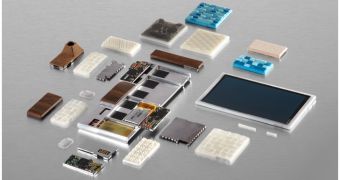Google’s Project Ara smartphone has drawn a lot of attention ever since it was unveiled in late 2013, and it has returned to the headlines this week, when Google revealed some more details on it, including a targeted release date.
According to the Mountain View-based Internet giant, Project Ara could arrive on shelves in January 2015, and it should feature a price tag of around $50 (€36).
However, this would be only the cost of what Google calls a Grey Phone, “meant to be drab gray to get people to customize it,” the project’s leader explains, according to Cnet.
Google has decided to unveil specific plans on Project Ara during the Ara developers' conference on Tuesday, where it also reiterated some of the details that we already knew.
For those out of the loop, we should note that Project Ara is meant to prove something else than just another smartphone out there, providing users with far more customization capabilities than any other device can deliver.
Basically, users will be able to choose the hardware for their devices and to swap internals with ease, since components will be attached to the handset in the form of modules.
The device will certainly change the manner in which users interact with their smartphones, though the Android operating system will still be included in the package.
One thing that Google still has to work on, however, is to include support for modular components inside the mobile operating system, since it does not feature it at the moment.
Drivers to make this possible are expected to be ready by December, in time for the planned January 2015 availability of the handset.
Ara will come with a chassis that will also act like an endoskeleton, allowing users to add various modular components to it. According to team leader Paul Eremenko, the chassis should last for around six or seven years, allowing users to upgrade the device multiple times during this period.
Moreover, he explained that various components would be attached to the frame with electro-permanent magnets. The UniPro standard will be used to enable communication between modules.
Google is planning two more conferences on Ara this year, for July and September, respectively. It also expects Power bus support in May, system-level functions in September, and carrier certification in November.
An alpha build of the 3D printer used to easily fabricate components for the device is expected to be ready in August, with a beta variant supposedly ready for January 2015.

 14 DAY TRIAL //
14 DAY TRIAL //